Japanese vs. German Knives: Which Is Best?
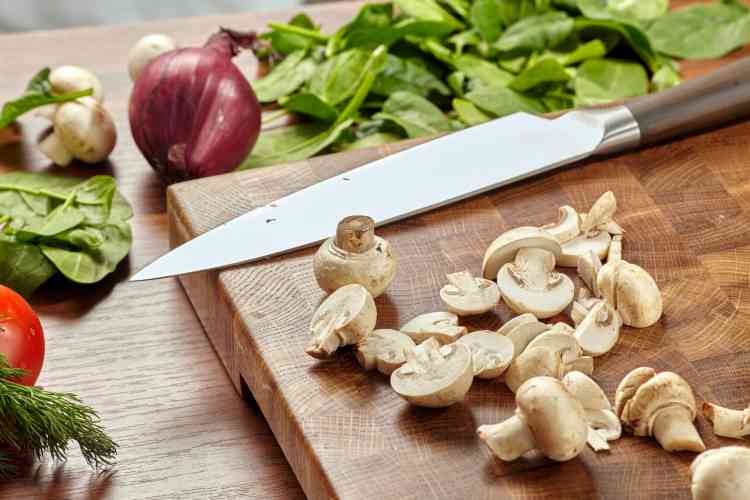
Unless you are a culinary professional or a knife-expert, you are probably wondering what the differences are between Japanese vs. German knives: Which one is better? Are Japanese knives the best? German? Does it even matter?
Before you invest in your new chef’s knife, you’ll want to know the differences between the two styles so you don’t end up with a blade that doesn’t suit your needs. German-made and Japanese-made Western-style knives are overall pretty similar. The primary differences lie in steel hardness and edge angle, which alter the durability and function of each knife type.
So which is better for you? Let’s break it all down and compare Japanese vs. German knives.
Jump to Section
Construction
If you compare Japanese vs. German knives simply by looking at them, you might have a hard time spotting the subtle, but significant, differences in construction. German knives are almost always made from full-tang construction, featuring a single piece of steel running from the blade to the butt of the knife. These blades are symmetrical and balanced, thus working equally well for righties and lefties.
Conversely, Japanese knives have a slightly tapered construction of the blade inside the handle, which makes them lighter and front-weighted, allowing for more controlled movements. Japanese knives also have asymmetrical blades, with the cutting edge angled toward a right-handed user at roughly 70:30. If you’re left-handed, this is an important distinction when comparing Japanese vs. German knives, as you’ll need to make sure you invest in a Japanese knife with specific left-handed construction.
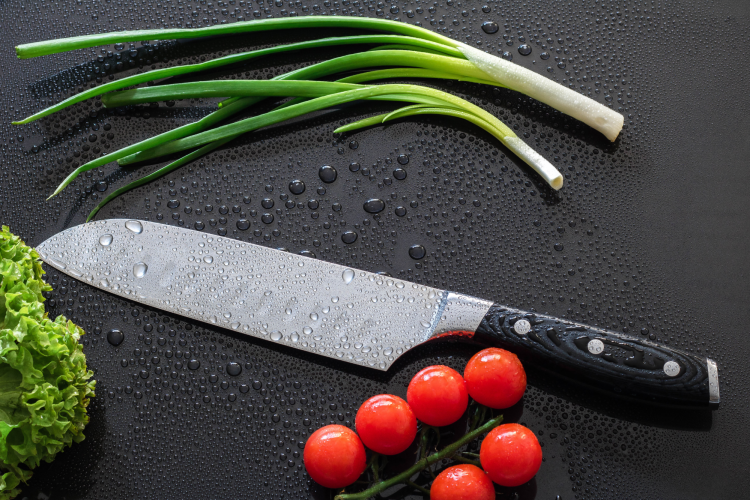
Materials
Although both are made from steel, there are important differences in the qualities of the steel when comparing Japanese vs. German kitchen knives. Japanese steel knives are made from harder steel containing a higher amount of carbon, usually weighing in around 60-63 on the Rockwell scale, which measures steel hardness (the higher the number, the harder the steel). While the harder blade means they’ll hold an edge slightly better, it also means that they are more brittle and prone to chipping or cracking.
German steel knives, on the other hand, are made from softer steel, usually between 56-58 on the Rockwell scale. While they might need to be sharpened a bit more than Japanese knife types, the softer steel also makes them more durable and less likely to break. When it comes to Japanese vs. German knives, the type of steel does make a difference, especially regarding durability.
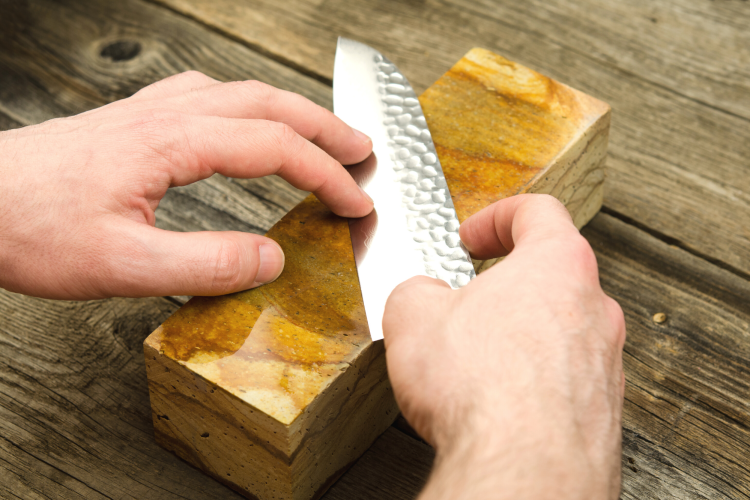
Design
Overall, the best Japanese knives have a lighter and thinner design, built to prioritize precision and control. Unlike German knives, they are usually bolster-free. The bolster, found on most German knives, is the thick junction between the handle and the blade. It provides a smooth transition between the two while also increasing durability and adding a counterbalance. As a result, German knives are designed to be thicker, heavier and more utilitarian all-purpose knives.
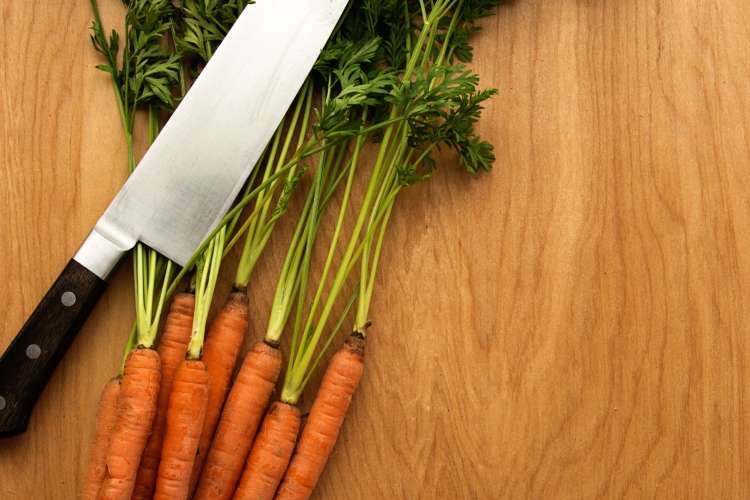
Weight
German kitchen knives tend to be heavier and thicker, especially at the bolster, whereas Japanese kitchen knives are much more lightweight, which makes them better suited for precision work.
For an example of the difference in weight between German vs. Japanese chef knives, the German-style Zwilling Twin 1731 8-Inch Chef's Knife weighs 8.8 ounces, while the Miyabi Koh 8" Chef's Knife only weighs 6 ounces. The weight is an important thing to keep in mind when comparing Japanese vs. German knives, particularly as a lighter knife is much easier to manuever and control than a heavier one.
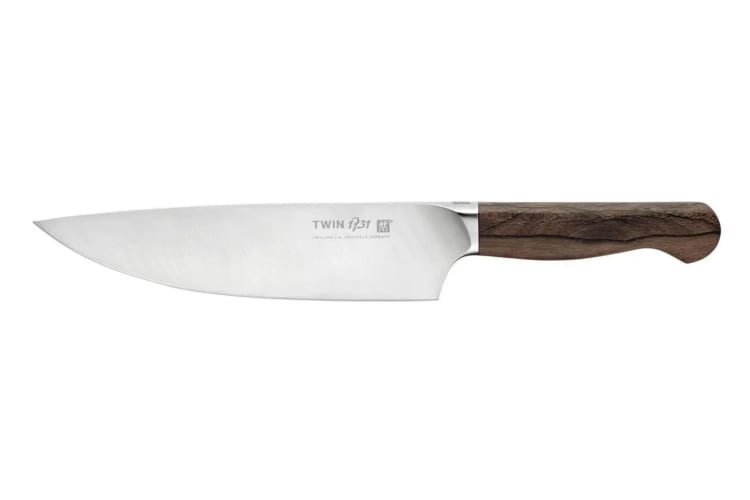
Blade
In addition to the differences in steel hardness, there are also a few other notable differences when it comes to Japanese vs. German knives. Slimmer and thinner, Japanese knives have straighter and sharper blade edges, usually at an angle between 12-15º per side. German knives have a bit of a wider blade angle, ranging from 17.5-20º. A narrower angle results in a smaller cutting path (thus doing less damage to the food), which is why Japanese knives tend to be sharper and better for slicing and precision work.
Another difference between Japanese vs. German knives is how the blades are finished. The blades of Japanese knives are usually hand-refined and very carefully hand-finished by a master craftsman. German knives are more likely to be machine-cut with a curved blade, which allows for rocking cuts.
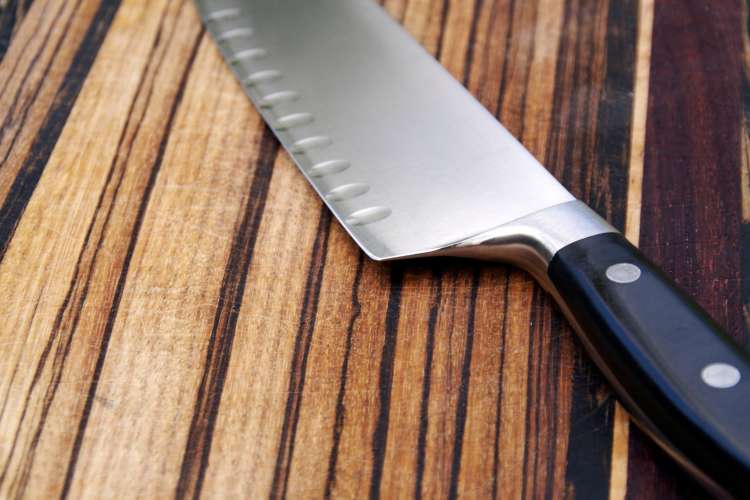
Usage
While we’ve compared all the technical differences regarding Japanese vs. German knives, at the end of the day, it really all comes down to how you plan to use your knife in the kitchen, as they each specialize in different culinary tasks.
Because of their thinner and sharper blade, Japanese chef knives are best for slicing and precision work. In fact, you’ll want to avoid cutting bone, frozen or hard foods or anything else that might potentially chip or crack the blade when using these types of knives. When it comes to Japanese vs. German knives, Japanese-made blades are meant for more delicate culinary tasks.
Conversely, German chef knives are thick, sturdy and built for abuse. They’re your all-purpose, utilitarian knife built with durability in mind. These types of kitchen knives can cut bone, prep vegetables, saw through hard foods and are great for pretty much anything, except the more fine, detailed prep-work.
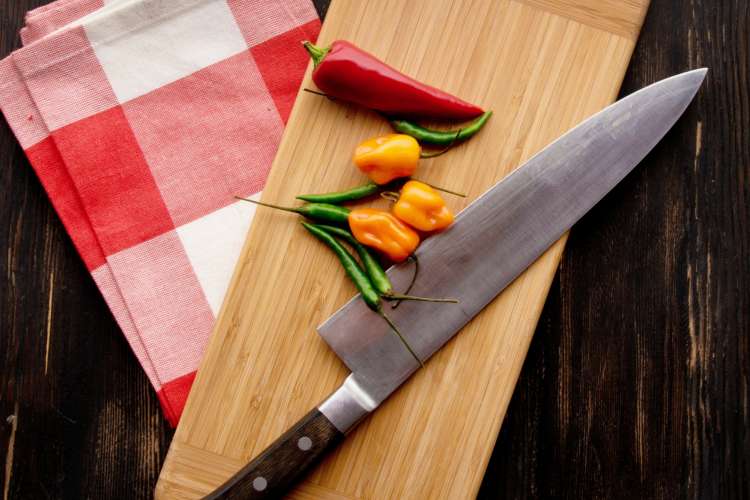
Despite the differences between Japanese vs. German knives, both are high-quality kitchen cutlery investments, especially when they come from reputable manufacturers. There really is no true winner when comparing Japanese vs. German knives, as they each specialize in different tasks and functions. When deciding whether to opt for a Japanese vs. German chef knife, you’ll want to ask yourself how you plan to use your knife — what are the specific culinary tasks you plan to tackle? Remember, German knives are thicker, more durable and better all-purpose chef knives, while Japanese knives are lightweight and thinner, specialized for precise slicing and chopping.
Now you’re ready to make a knowledgeable decision and invest in one of the best chef's knives. Whether you choose a German or Japanese style knife, a new high-quality steel blade will bring your culinary skills to the next level.
For even more ways to elevate your kitchen, check out more chef-recommended cutlery in the Cozymeal Shop.



FOOD FOR THOUGHT?
Join the conversation.